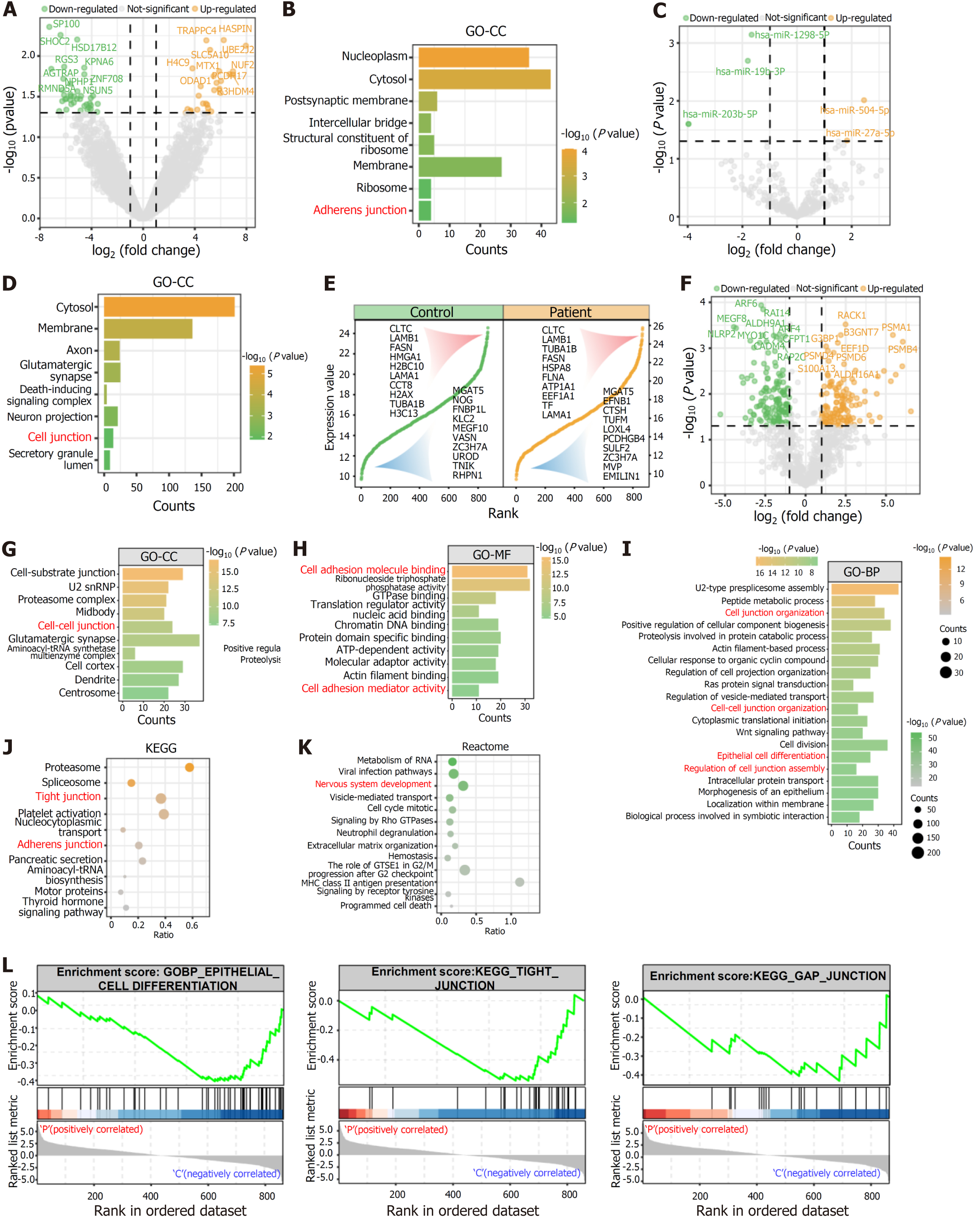Copyright
©The Author(s) 2024.
World J Stem Cells. May 26, 2024; 16(5): 512-524
Published online May 26, 2024. doi: 10.4252/wjsc.v16.i5.512
Published online May 26, 2024. doi: 10.4252/wjsc.v16.i5.512
Figure 5 Transcriptomic and proteomic analyses indicating that human induced pluripotent stem cell-derived extracellular vesicles play a crucial role in regulating cell adhesion and differentiation.
A: Differentially expressed mRNAs between patient human induced pluripotent stem cell (iPSC)-derived extracellular vesicles (EVs) and control iPSC-derived EVs; B: Gene Ontology (GO)-cellular component enrichment analysis of differentially expressed mRNAs; C: Differentially expressed microRNA between patient iPSC-derived EVs and control iPSC-derived EVs; D: GO-cellular component enrichment analysis of differentially expressed microRNA target genes; E: Abundance of proteins from patient iPSC-derived EVs and control iPSC-derived EVs. The abscissa represents the protein number, and the ordinate represents the normalized protein expression score. The top 10 and bottom 10 expressed proteins are displayed; F: Differentially expressed proteins between patient iPSC-derived EVs and control iPSC-derived EVs; G-I: GO enrichment analysis for differentially expressed proteins; J and K: Kyoto Encyclopedia of Genes and Genomes and Reactome enrichment analyses for differentially expressed proteins; L: Gene set enrichment analysis of patient iPSC-derived EVs and control iPSC-derived EVs. GO: Gene Ontology; KEGG: Kyoto Encyclopedia of Genes and Genomes; BP: Biological progress; CC: Cellular component; MF: Molecular function.
- Citation: Zhang H, Wu LZ, Liu ZY, Jin ZB. Patient-derived induced pluripotent stem cells with a MERTK mutation exhibit cell junction abnormalities and aberrant cellular differentiation potential. World J Stem Cells 2024; 16(5): 512-524
- URL: https://www.wjgnet.com/1948-0210/full/v16/i5/512.htm
- DOI: https://dx.doi.org/10.4252/wjsc.v16.i5.512









